
 |
|
|
|
#1
|
|||
|
|||
|
In the late 1980's (?) there were many pairs of 7x50 REL binoculars sold at Crown Assets sales in the Toronto area. Amongst them I saw a few of the BOF 7x50 binoculars with the adjustable filters. I still have one pair: there are no broad arrows impressed into the leatherette as shown on Mike's binoculars but the markings are generally the same except that the right side is embossed C.G.B. 57 G.A.
R.E.L. 7 x50 7212-C There are no other markings such as date etc. The 2 screw heads on eiher side of each filter selection knob are painted with red paint, I assume to indicate if they have been tampered with if the paint has been disturbed. ....... Brian |
|
#2
|
||||
|
||||
|
Hi Frank,
I was wondering if you could identify a monocular I have had in my collection for along time now.The only book that has a picture of one is David Gordon's book Equipment of the WWII tommy but does not say anything about it.Could you tell me anything about it?It is marked; O.S. 735 C.A./ BINO,PRISM No 5 Mk IV x 7 / REGd No 75250 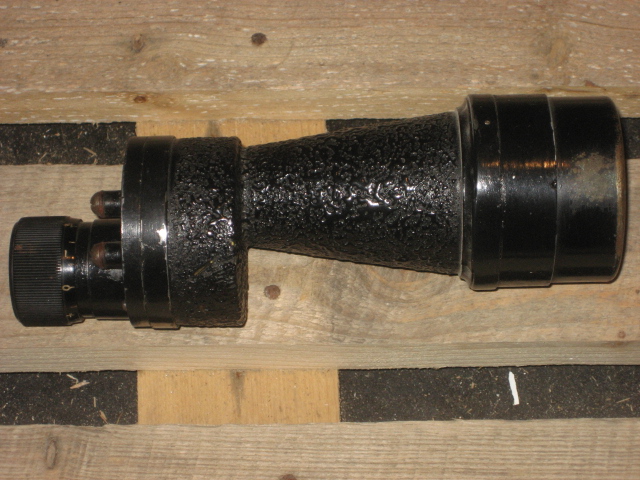 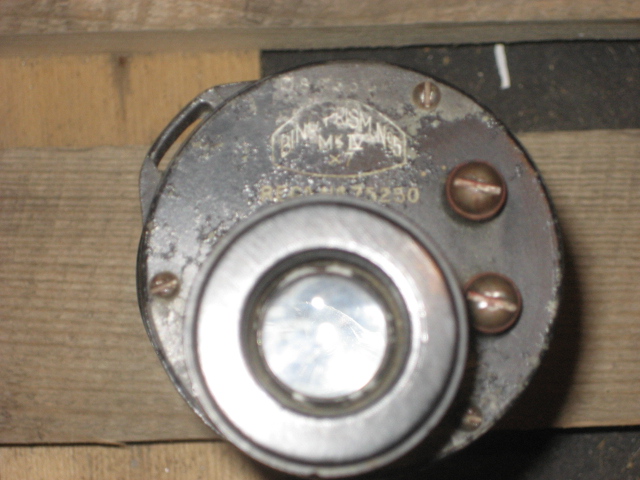 I also have a set of binoculars that were just identified to me as being an American set that were used by Canadian officers in WWI. They are C broadarrow marked on the left side and have ZEISS PRISM STEREO 6x30 /on the right is stamped BAUSCH & LOMB OPTICAL CO Rochester N.Y. The leather case has a C broadarrow stamped on top and the company logo stamped on the inside lid. 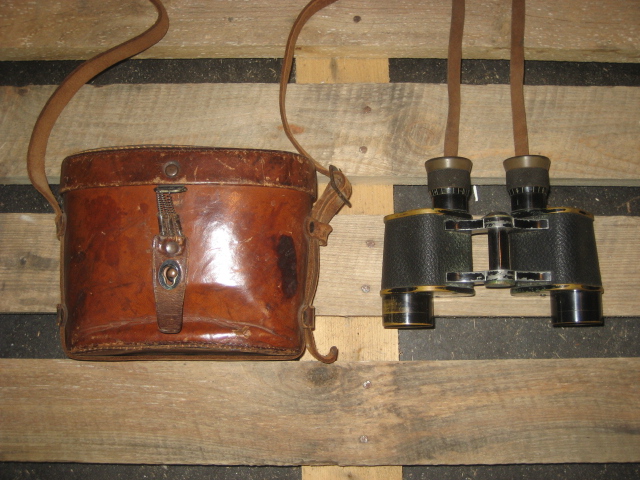 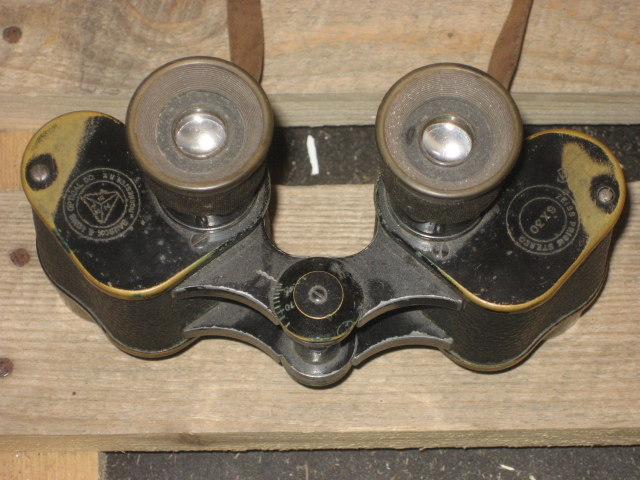 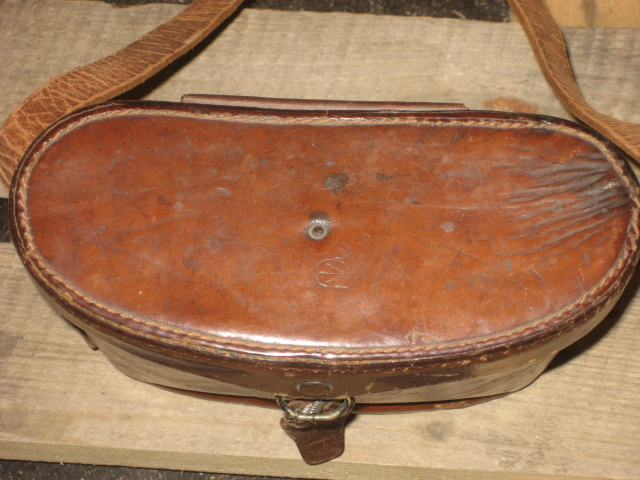 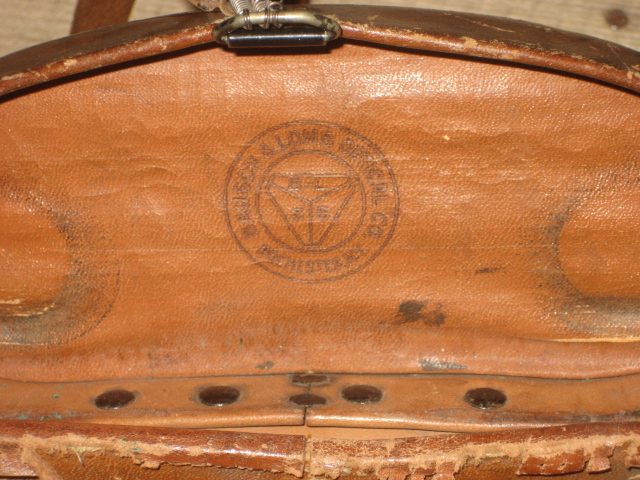 Here is a picture of the 46th battalion in 1915 at Camp Hughes.All of the officers are wearing the American Mills equipment 45 Colt sidearm and these binoculars. 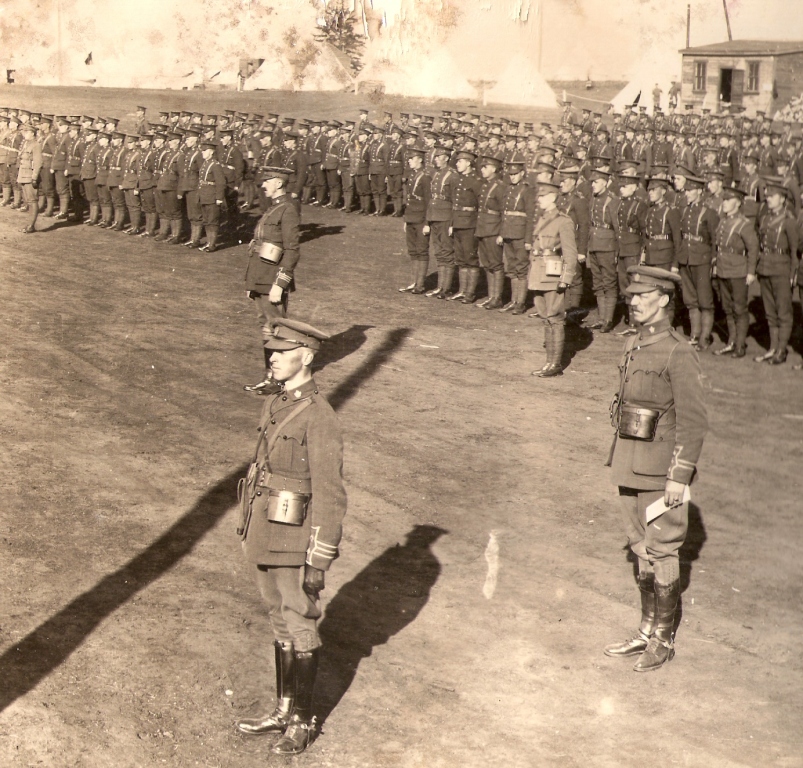 I also have a pair of the regular issue binoculars with a pair of broadarrows in the front.On the back is stamped;Right side/GRATICULES 1/2 APART AND 1/4;1/2;AND 1; HIGH/KERSHAW/1943 O.S.108-MA. Left side/BINO.PRISM No2 MK.IIx6 No186740. 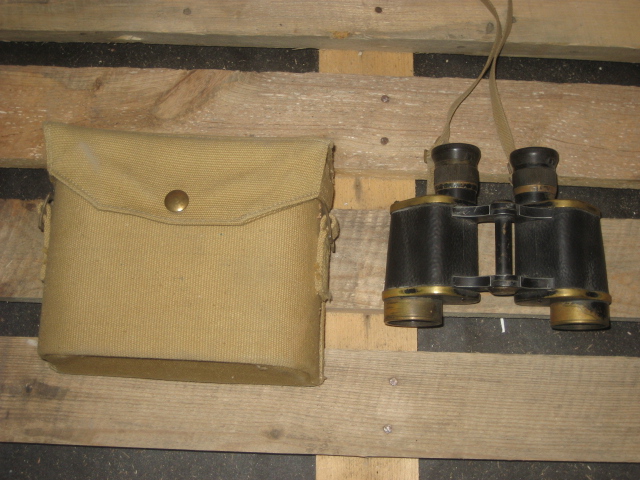 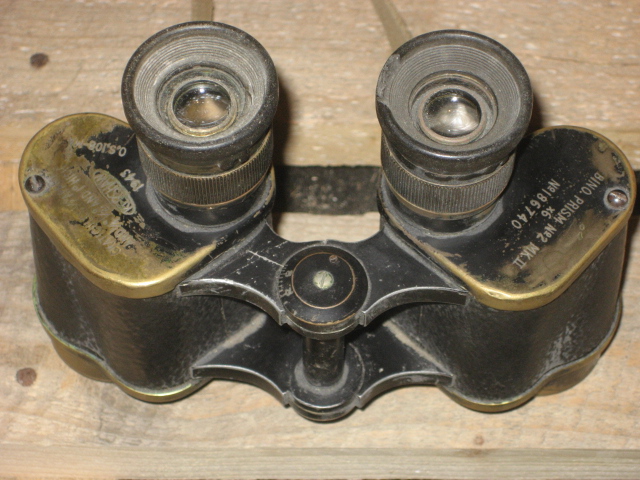 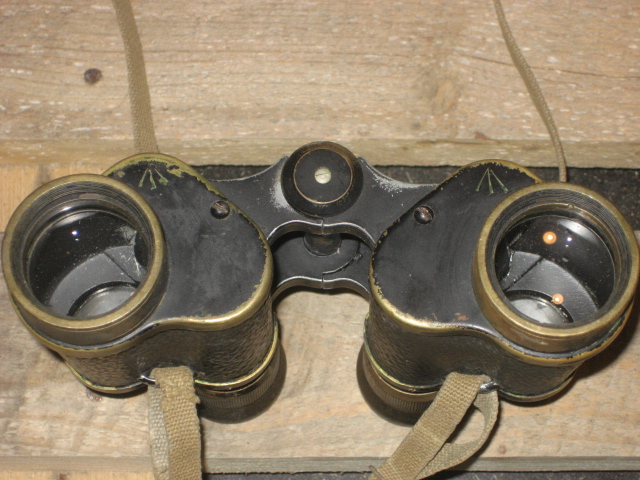
__________________
1942 Ford universal carrier Mk 1 1943 Ford 60 cwt long CMP ambulance 1943 Ford GPW 1/4 ton stretcher jeep 1943 Bantam T-3 1/4 ton trailer BSA folding airborne bicycle ser#R5325 (early) |
|
#3
|
||||
|
||||
|
My last pair I have were just released from crown assets last year and are marked; left side/No5 CDN.Mk 2/4 /crossed out is;C.G.B. 40 M.A./ 7x50 /26090-C and C Broadarrow marked.Right side crossed out is;graticule mil scale 10 mils apart & 5 mils 10 mils & 20 mils high / REL/CANADA 1945 /cal/canada 1950. Stenciled in blue ink is C 5.
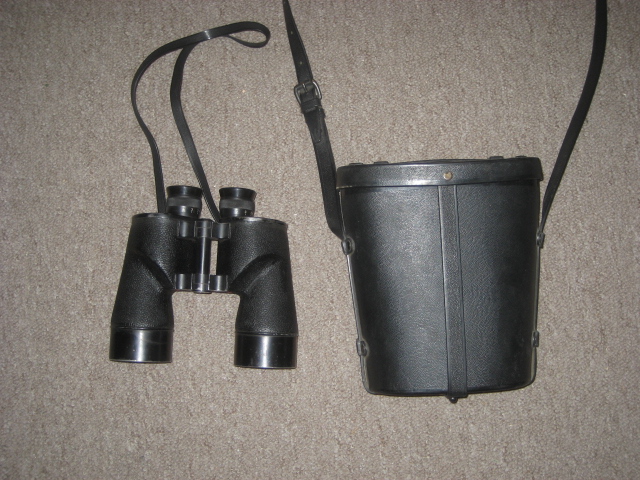 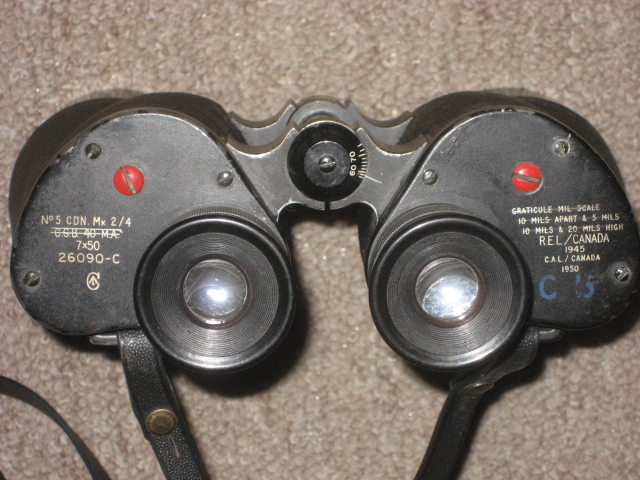 Derk.
__________________
1942 Ford universal carrier Mk 1 1943 Ford 60 cwt long CMP ambulance 1943 Ford GPW 1/4 ton stretcher jeep 1943 Bantam T-3 1/4 ton trailer BSA folding airborne bicycle ser#R5325 (early) |
|
#4
|
|||
|
|||
|
Derk,
Your Binoprism No. 5 Mk IV monocular is unusual and the first one I've seen. This is what I've been able to uncover so far. The Binoprism No. 5 Mk IV binocular was introduced November 1941, and the black crackle finish such as your monocular has was introduced 1942. In 1947 the color of the finish of the Binoprism No. 5 Mk V was changed from black to olive drab. Since there is no mention of No. 5 Mk IV's in that directive, I'm guessing the model was no longer manufactured by 1947. Does your monocular have coated lenses? If so, it was likely made 1945 or later. Your monocular was probably manufactured by Ross who made most of the Binoprism No. 5's, but there were other manufacturers such as Nottingham Instruments Ltd. Ross' 1939/40 catalog does list a 7X50 Porro II monocular called the "Stepmonite". Also, as of 1941 the British army manuals reference several monoculars but none as far as I can tell were Porro II's like yours. I'm surprised your glass doesn't have a crowsfoot marking, but I'm not positive all British military glasses had it. If it was used by the Canadians, it may not have had it either. I've seen the O.S. marking before but don't know what is means. I'll let you know if I find out. That is a terrific REL you have. What are its optics like? Also, how do you locate Crown Assets sales? |
|
#5
|
||||
|
||||
|
Hi Frank,
Thanks for the information.The R.E.L. set I have was first listed in a Crown assets sale.There were 3 to bid on but I didn't bother bidding as I had enough projects on the go.Then my buddy phoned me up and said he found the person who won them and had them for sale.He bought a set for himself and he picked me up a set.I was glad he did as they turned out to be in great shape.Both the monocular and the R.E.L. set have clear optics.How do I tell if they have coated lenses? I believe crown assets has there listings on the internet under Government of Canada website.I am not familiar with it as I haven't been on it. Derk.
__________________
1942 Ford universal carrier Mk 1 1943 Ford 60 cwt long CMP ambulance 1943 Ford GPW 1/4 ton stretcher jeep 1943 Bantam T-3 1/4 ton trailer BSA folding airborne bicycle ser#R5325 (early) |
|
#6
|
|||
|
|||
|
Derk,
From WW II through the 1970's anti-reflective coatings on binoculars were made of extremely thin layers of Magnesium Flouride which gave the objective (front) lens of the binocular a dark blue color. If you examine the objective lenses of your Bausch & Lomb Zeiss and Kershaw Binoprism No. 2 Mk. 2, they should appear clear because these binoculars did not have anti-reflective coatings. I'm pretty sure the lenses of your REL 7X50's are coated, and I think that they will look a lot more blue than those of the two earlier made glasses. I'm not so sure about the monocular, however. Does the color of its lenses look more like those of the REL or the Kershaw? Also, the early anti-reflective coatings on binoculars were fairly soft so it is not unusual to see rub markings on the interior of the lenses caused by careless cleaning. Unless severe, these usually don't noticeably affect viewing. Modern anti-reflective coatings, by the way, usually have a brown/gold or greenish color. Frank |
|
#7
|
||||
|
||||
|
Frank,
I have looked at all my optics and they all seem clear,including the REL binoculars.If the REL binoculars are coated,It is very faint.Do I need to look at them outside in the daylight to tell for sure? Does the fact that they are dated 1945 and then 1950 mean they were upgraded or repaired at one time? Derk.
__________________
1942 Ford universal carrier Mk 1 1943 Ford 60 cwt long CMP ambulance 1943 Ford GPW 1/4 ton stretcher jeep 1943 Bantam T-3 1/4 ton trailer BSA folding airborne bicycle ser#R5325 (early) |
|
#8
|
|||
|
|||
|
It seems that most 1945 and possibly some late 1944 REL 7X50's had coated lenses. Starting about serial number 24500, they all seem to be coated, and yours is serial number 26090. Also, I can't believe that in 1950 they would choose to upgrade a binocular without coated lenses since there would have been many with coated lenses available to work on. Sometimes this coating is sort of faint and not really obvious. Your binocular is particularly interesting because the markings seem to indicate it was modified in some way. If so, the modification may have involved a strengthening of the prism attachments or some kind of improved weatherproofing. If you're ever in Ft Garry, give me a call at 452-0336, and I could look at them.
|
|
#9
|
|||
|
|||
|
If you haven't already found the website, it is https://gcsurplus.ca/mn-eng.cfm
|
|
#10
|
|||
|
|||
|
Brian,
Thank you for the response. Do your BOP's have coated lenses? Also, in addition to the dry air ports on the back does it have 1 dry air port on each side at the front? Last edited by WpgBinocular; 22-04-10 at 23:24. Reason: grammatical |
|
#11
|
|||
|
|||
|
I don't know how to recognize coated lenses. If dry air ports where the screws are then there are only on the rear covers; 2 per side as is shown in the original photo at the beginning of this thread. Incidently the strap is 1/2" wide leather, dyed black on the smooth side and rough natural leather on the rear and edges.
.... Brian |
 |
|
|